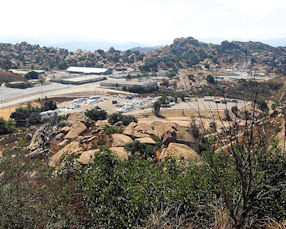In mid-February, headlines around the globe trumpeted an amazing breakthrough: Scientists at the Santa Susana Field Laboratory in the hills separating the Simi and San Fernando valleys had created a fusion energy reaction, clearing a key hurdle for the future creation of clean, limitless energy. A year earlier, the lab had made headlines with reports that scientists had developed an ultra-thin solar cell with a record-breaking 31 percent conversion efficiency. The problem with the storylines above is that neither happened at the Santa Susana Field Laboratory. The former took place at the Lawrence Livermore National Laboratory in Northern California and the latter at the labs of a Silicon Valley solar manufacturer. The reason no energy breakthroughs could have occurred at the 2,668-acre research campus is that its current proprietor, Boeing Co., with a gun to its head, has quietly demolished most of the lab’s buildings and testbeds over the past few years; the lab, essentially, is no more. A fixture during the Cold War and Space Race, the facility conducted rocket engine tests, advanced fuels research and developed and maintained highly experimental nuclear reactors, beginning in 1949. The last nuclear reactor at the lab was shuttered in 1980. After revelations in the 1990s of large-scale soil contamination, deaths believed linked to the site and political pressure applied by at least two state lawmakers, one U.S. senator and numerous advocacy groups, it somehow became a foregone conclusion that the only use for the complex would be to clean up the worst of it and then allow nature to reclaim it as part of a wildlife corridor. Ironically, because no environmental impact report is generally required to “undevelop” a site, no one knows what effect residual contamination will have on wildlife there. Also, no highest-and-best-use analysis was ever made public for discussion. In other words, in the name of wildlife conservation, we may be exposing the endangered California gnatcatcher, arroyo toad, Santa Susana tarweed and loggerhead shrike to radioactive isotopes and elevated levels of perchlorate, dioxin and other chemicals found in rocket fuels and solvents. On the other hand, if stakeholders believed all along that the site could be cleaned to a standard that would not harm wildlife, which I believe is the case, why were other uses not debated, such as the cleanup and modernization of the field lab for advanced energy research, its permitted use at the time? In 2010, I toured portions of the lab and spoke with Boeing personnel, community activists and an official with the EPA. One thing was clear: The property’s fate had fallen victim to rancor and politics. After considerable research, I was able to find evidence of only two land-use alternatives ever discussed for the site: allowing it to be sold off to developers for residential development or allowing nature to reclaim it as a wildlife corridor. Who decided these two options, each at polar extremes, were the only ones? They appeared to be the hasty conclusions of people with limited vision, those in fear of losing elected office and neighbors coveting the prospect of uninterrupted views. Assuming acceptable cleanup of the site, could the field lab not have been deeded to the University of California or placed under a joint-powers authority and modernized to become the nation’s preeminent laboratory for advanced energy research? This is not so far-fetched, since that’s what it had been for five decades. If every corner of the site is now, or will soon be, clean enough so as not to harm the endangered western skink or burrowing owl, then the lab’s clean-up was never an impossibility. On the other hand, if the site is still believed unsafe, why hasn’t a Chernobyl-style exclusion zone been created and wildlife hazed from the area? It makes little sense. The upshot of all this? First, we’ve done ourselves a great disservice by allowing this national asset to all but vanish. The future of the site should have been the product of a dispassionate land-use analysis in which the site was evaluated both as if vacant and as improved for uses that were physically possible, legally permissible, feasible and maximally productive, with perhaps overriding consideration to uses most beneficial to the national interest, given the site’s unique history. The PhDs who once conducted advanced research at the campus have moved on. Many have retired, some have died and some have wandered into the halls of academia and places like the Lawrence Livermore National Laboratory in the Bay Area, where, in February, an epic energy breakthrough was achieved. Jeremy Bagott is a commercial real estate appraiser who has written extensively on land-use issues. He is based in the San Fernando Valley.
